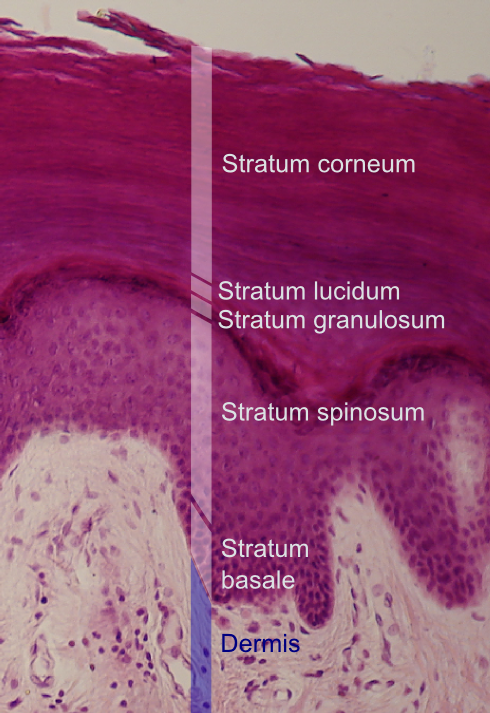|
Granular Layer (other)
Granular layer may refer to: * Internal granular layer and External granular layer (cerebral cortex) The external granular layer of the cerebral cortex is commonly known as layer II. It is different from the internal granular layer of the cerebral cortex (commonly known as layer IV). Layer II is often grouped together with layer III and referr ... of the cerebral cortex * Granular layer (cerebellum) of the cortex of the human cerebellum * Granular layer of skin * Granular layer of dentate gyrus {{disambiguation ... [...More Info...] [...Related Items...] OR: [Wikipedia] [Google] [Baidu] |
Internal Granular Layer
The internal granular layer of the cerebral cortex, also commonly referred to as the granular layer of the cortex, is the layer IV in the subdivision of the mammalian cerebral cortex into 6 layers. The adjective internal is used in opposition to the external granular layer of the cortex, the term granular refers to the granule cells found here. This layer receives the afferent connections from the thalamus and from other cortical regions and sends connections to the other layers. The line of Gennari (occipital stripe) is also present in this layer. See also * Granular layer * External granular layer (cerebral cortex) The external granular layer of the cerebral cortex is commonly known as layer II. It is different from the internal granular layer of the cerebral cortex (commonly known as layer IV). Layer II is often grouped together with layer III and referr ... Cerebral cortex {{neuroanatomy-stub ... [...More Info...] [...Related Items...] OR: [Wikipedia] [Google] [Baidu] |
External Granular Layer (cerebral Cortex)
The external granular layer of the cerebral cortex is commonly known as layer II. It is different from the internal granular layer of the cerebral cortex (commonly known as layer IV). Layer II is often grouped together with layer III and referred to as layer II/III. Layers I, II, and III are together referred to as the supragranular layers, because they are above layer IV. Brodmann has this to say about layer II: "The most inconstant or variable layers are Meynert's two so-called granular layers, layers II and IV of the basic pattern (the outer and inner granular layers). They alter their original cytoarchitectonic features so extensively during ontogeny that it is often only possible to correlate their mature structure with their primitive tectogenetic form by following the whole developmental sequence. Extreme variation, such as the disappearance or doubling of layers that we have already discussed, occur particularly in them, and their specific organisation also varies w ... [...More Info...] [...Related Items...] OR: [Wikipedia] [Google] [Baidu] |
Granular Layer (cerebellum)
The cerebellum (: cerebella or cerebellums; Latin for 'little brain') is a major feature of the hindbrain of all vertebrates. Although usually smaller than the cerebrum, in some animals such as the mormyrid fishes it may be as large as it or even larger. In humans, the cerebellum plays an important role in motor control and cognitive functions such as attention and language as well as emotional control such as regulating fear and pleasure responses, but its movement-related functions are the most solidly established. The human cerebellum does not initiate movement, but contributes to coordination, precision, and accurate timing: it receives input from sensory systems of the spinal cord and from other parts of the brain, and integrates these inputs to fine-tune motor activity. Cerebellar damage produces disorders in fine movement, equilibrium, posture, and motor learning in humans. Anatomically, the human cerebellum has the appearance of a separate structure attached to the botto ... [...More Info...] [...Related Items...] OR: [Wikipedia] [Google] [Baidu] |
Granular Layer Of Skin
The stratum granulosum (or granular layer) is a thin layer of cells in the epidermis lying above the stratum spinosum and below the stratum corneum (stratum lucidum on the soles and palms).James, William; Berger, Timothy; Elston, Dirk (2005) ''Andrews' Diseases of the Skin: Clinical Dermatology'' (10th ed.). Saunders. Page 2. . Keratinocytes migrating from the underlying stratum spinosum become known as granular cells in this layer. These cells contain keratohyalin granules, which are filled with histidine- and cysteine-rich proteins that appear to bind the keratin filaments together. Therefore, the main function of keratohyalin granules is to bind intermediate keratin filaments together.Marks, James G; Miller, Jeffery (2006). ''Lookingbill and Marks' Principles of Dermatology'' (4th ed.). Elsevier Inc. Page 7. . At the transition between this layer and the stratum corneum, cells secrete lamellar bodies (containing lipids and proteins) into the extracellular space. This results i ... [...More Info...] [...Related Items...] OR: [Wikipedia] [Google] [Baidu] |

